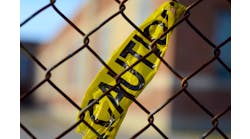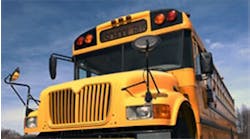Tragedies such as the fatal shootings in February in a lecture hall at Northern Illinois University in DeKalb or last year's deadly shooting rampage at Virginia Tech can serve to remind emergency management personnel at other campuses of the need to assure their communities that they have plans in place to address such incidents.
Because of the enormity of the Virginia Tech massacre, most education institutions — on their own or under pressure from their communities — have undertaken a review of their emergency management systems to see whether they are working to prevent such catastrophes or can address such a crisis effectively if one occurs.
American School & University and Access Control & Security Systems magazines asked emergency management personnel at several campuses to describe how they are dealing with campus safety in the wake of recent events:
AS&U/AC&SS: What are colleges and universities doing in the aftermath of the Virginia Tech and Northern Illinois University incidents to make their campuses safer?
DAVE BUJAK, emergency management coordinator, Florida State University (FSU), and chairman of the University & Colleges committee of the International Association of Emergency Managers (IAEM): There has been a lot of review and analysis. We have a wide gamut of topics to address including law enforcement, notification and mental-health identifying. We feel that we're pretty far ahead at FSU.
JACK WATRING, chief of police, University of Missouri, Columbia: We're still in the process of making improvements. We were doing a lot of those things already. Since Virginia Tech, we have had a lot of tabletop exercises such as setting up the exact scenario. Things have sped up since 9/11 and Virginia Tech. It has changed how often we do exercises in the field.
JUSTIN HENDEE, emergency management coordinator, California State University, Fullerton: Our officers have undergone training for how to respond to an active-shooter situation. At the same time, the rest of the campus had shelter-in-place training. Our basic thing is public education. We're now putting together a Web-based presentation that will give students and parents an idea of what to expect when they come to campus. We're also looking for other avenues to get training and information out to students and parents.
SCOTT BULLARD, director for emergency services, North Carolina Community College System: On the response side, you're only as good as your planning efforts. I take an all-hazards, comprehensive emergency management approach. The focus is on what the response should be. The incident isn't always a major crisis. It could be a water main break or a power outage.
AS&U/AC&SS: Do your institutions have systems in place to notify the campus community in the event of an emergency?
Bullard: Just like after 9/11, we had a landslide of folks trying to sell us products after Virginia Tech. I'm not sure if there's a prevailing product for notification systems out there. A lot of the schools are looking at products with dual uses — ones that can also send notices when classes are canceled or when a fee is owed. You have to get people to register. It can be a problem when folks aren't living on campus and if they have a wireless phone that's not listed with the school.
Hendee: Our mass notification system can send text, e-mail or phone messages. All 37,000 of our students are signed up automatically. The response has been overwhelmingly, 99.9 percent positive. We don't use it for routine messages like “this is the last day to drop a class.” The students and staff know that if this thing goes off, their safety is in jeopardy. We also can use an external public address system that is controlled from the police dispatch. The internal fire alarm system has one-way communication.
Bujak: Florida State has identified a brand for our system FSU Alert. We have more than 20 emergency contact methods. Some are primary (university online homepage, outdoor sirens, weather radios, text messages, e-mail, blue light safety phones, campus hotline, visitor information radio, voicemail, reverse dialing and computer network pop-up windows), some are secondary (two-way radios, variable message boards, electronic card-swipe door access, cable TV information channel, television, radio, online campus newspaper, vehicle public address speakers, network login pages, voice-over fire alarm system, media releases and Facebook and MySpace pages on the Internet). Many of these emergency notification methods have existed for a long time, but most schools don't realize it or think about them in that context. The system has been extensively tested and advertised. That has been our big project for the year.
Watring: The university system as a whole (Columbia, St. Louis, Kansas City and Rolla campuses) has a new system to notify students, faculty and staff about unusual occurrences. The university is trying to get our students, faculty and staff signed up to the system so they can receive messages. I think we're getting the word out there.
AS&U/AC&SS: What do administrators need to consider when choosing emergency notification systems?
Bujak: Do you want mass notification or a targeted notification to a certain building or group of individuals? Do you want the notification to be active or passive? A siren you hear whether you want to or not? With e-mail, you have to log in; with a phone, you have to answer. You have to look at speed versus accuracy. A siren is instantaneous, but the ability to say a whole lot with it is non-existent. What will be the urgency of the messages? With hurricanes, we have days to get prepared and make decisions. For an active shooter situation, you don't have the luxury of minutes or hours to get a message out. Who decides when the system is to be used? At Florida State, we have five pre-approved situations (such as flooding or a tornado) in which a message can be sent out. We didn't want to have a convoluted approval system that would take hours before a message could go out. Who needs to be notified? The faculty? Just one building? Only students?
AS&U/AC&SS: What are some of the other steps schools have taken to enhance the safety of their campuses?
Watring: We are working on how we treat people who are mentally ill. A lot of people are paying closer attention to at-risk behavior. Now, we have a student behavior task force. Every week, we meet with people from the counseling center, from student affairs, judicial folks, police offices and people from student health. We talk about whom we are having problems with. The counselors can't disclose some of the things they know, but if something comes to our attention, it usually is a matter of public record, and we can pass that on.
Bullard: Schools should look at using the social networks that students themselves have built. There's concern that students aren't signing up for a notification system, but when you actually shoot a message out there, it gets to a lot more people. It's like the old ‘tell two friends’ system except it's at the speed of light.
Hendee: You need to use a combination of everything. To be truly prepared, you need to have threat assessment tools on campus. When an individual is identified as a potential risk, we have a consultant that does a profile to determine the level of the threat.
Bujak: The [University & Colleges committee of the IAEM] is putting together a Higher Education Incident Management team that can come to the aid of other schools in the event of an emergency (e.g., helping to get a registrar's office reopened or classes rescheduled). People with administrative or facilities and maintenance experience who understand how business is done on a campus would be on this team, and schools can call on this team for assistance. The committee is also working on developing guidelines and best practices for college emergency management programs.
Since Virginia Tech, the attention on security has faded somewhat at the upper administration level, but at the worker-bee level, such as police, emergency management and campus counseling officials, we are still focusing on what needs to be done.
AS&U/AC&SS: What are some of obstacles schools face in enhancing their emergency management systems?
Bujak: We have a wish list of about $1.3 million. We want to move indoors with our public address system. We're looking at Voice-over-IP systems that we would use in our most populous buildings. We also want to extend our siren system to off-campus property. We have intramural fields that on a good night have 800 to 1,000 students using them, but they are 5 miles from campus and they're out of the range of our sirens.
Also, the cell phone infrastructure in Tallahassee isn't there. There aren't enough cell towers to handle the volume when we're trying to send 46,000 messages in a 450-acre area. It took us four hours. You might get a text message in a couple of minutes and the person next to you might not get it for a couple of hours. That's why redundancy and multiple systems are important.
Watring: We could always use more personnel. I'm sure that every campus in Missouri would like to have more personnel. We also are trying to get all colleges and universities in Missouri to have sworn police officers. We're still looking at things, like electronic billboards in each building that would post alerts and warnings.
Bullard: The mental health side of the house has not been adequately addressed. People are a little bit hesitant to get involved with that. With 58 schools and 800,000 students in the North Carolina community college system, it's harder to develop a consensus. You can turn the train, but it takes a while to turn it around. Also, in a community college system, we have a mostly commuter student population, and it's very difficult to keep track of everybody. In our system, whether campuses are large or small, they are tied in to their communities. You don't want to stymie the education process, which could happen if you lock down a campus like a prison.
Hendee: Out of 37,000 students, only 800 are residents on campus, making it more difficult to reach out. That's why we try to use the Web. We have also done about 45 presentations to students and parents.
AS&U/AC&SS: Is the focus on active-shooter incidents after Virginia Tech and Northern Illinois taking too much attention away from plans to address other types of emergencies?
Watring: In the police business, you have to be prepared for any eventuality. We need to know what to do if there's an active shooter, a natural disaster, a fire, an evacuation, tornados or floods; we need to know how to handle it.
Bullard: We remain focused on natural hazards. North Carolina as well as our sister Florida has been tested by hurricanes. You have four days notice, and there aren't a lot of excuses for not at least being able to do some things such as evacuation. You can make decisions a few days in advance. You're only as good as your planning efforts.
Hendee: I think with the way things have been emerging, campus violence is just another facet of the campus safety plan. It just dovetails into our emergency response plan.
Bujak: We (on the IAEM committee) find that a lot of schools and their emergency management systems are heavily centered on law enforcement. In California, Oregon, Washington (because of earthquake threats) and here in Florida, because of the hurricane threat, our approach is more all-hazard in nature.
Kennedy is writer for AS&U magazine.

